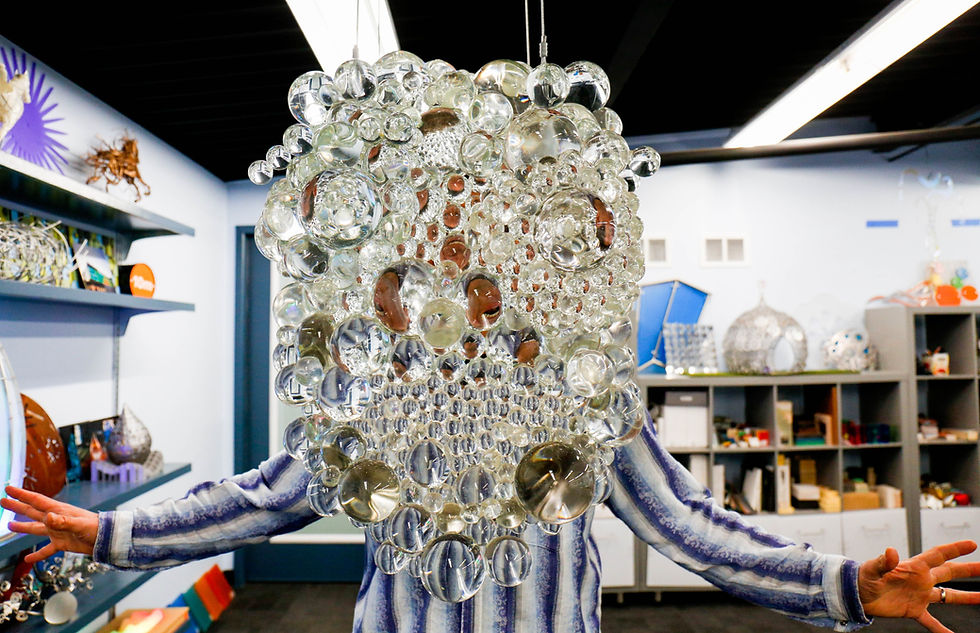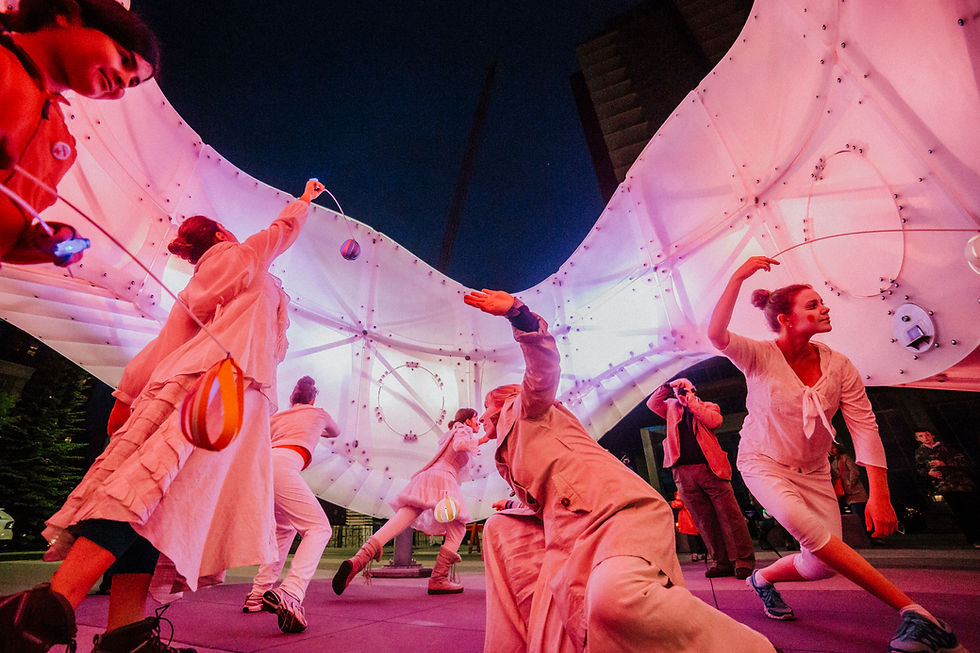Works in Glass
- Creative Machines

- May 22, 2022
- 2 min read
Artisans of the late Middle Ages crafted the largest and most long-lived colored images in human history. Many of the monumental stained glass windows created during this period are still vibrantly colored after centuries of UV exposure and weathering – something that cannot be said for any 20th century plastic, paint or other process. Ceramic tile mosaics last that long, but when you look at glazed ceramics, you are really looking at colored glass.

In my own quest for long-lasting color, I started experimenting with colored glass in about 2017, using a color palette restricted to those created through long-lasting metallic oxides. At first I experimented by making glass shapes in the hot shop at the nearby Sonoran Glass School.


Before long I found a glass factory to produce the shapes and colors I wanted in quantity. Transparent spheres act like lenses, inverting the images seen through them.

Frosted forms gather light from surrounding areas and glow beautifully.

My first large-scale commission using colored glass is Codes, installed in West Palm Beach.

Based on their chemical composition, the color in these glass spheres will outlive me many times over.

I like the idea of mixing colored glass with delicate metal forms, almost like jewelry.

This is a hanging kinetic piece, installed in Broomfield, Colorado.

I found that frosted glass diffuses LED lights beautifully, and made this immersive interactive piece for a children's library in Fort Worth, Texas.

Colored glass gives the sculpture great presence and color during the day in this light-filled building. The LED lighting takes over in the late afternoon, animating the sculpture in response to children.

We just installed Power of Pop in Tulsa, Oklahoma. This piece uses glass spheres in colors derived from the Ben Day printing process - used in comic books and which has become synonymous with pop culture.




Comments